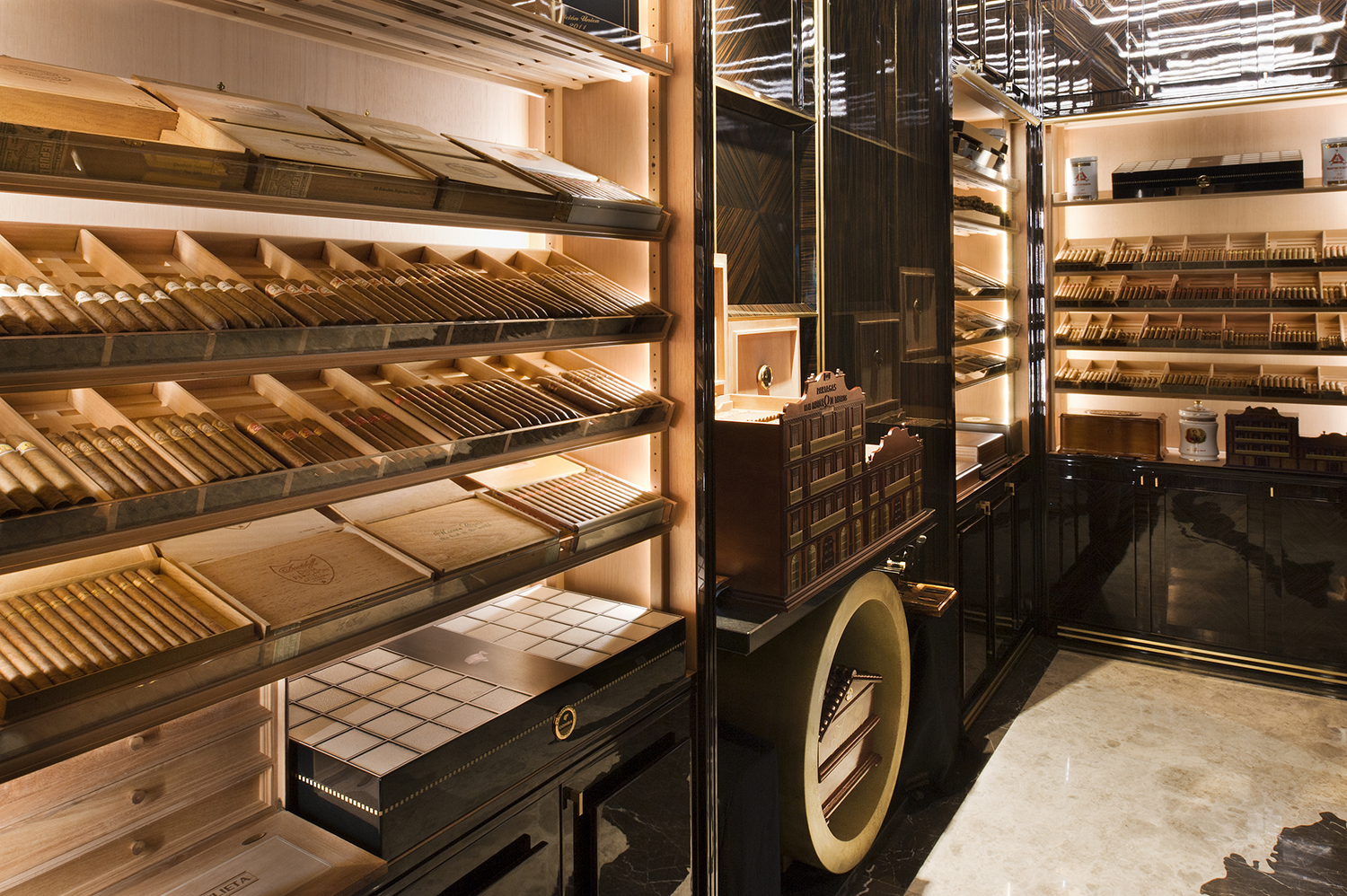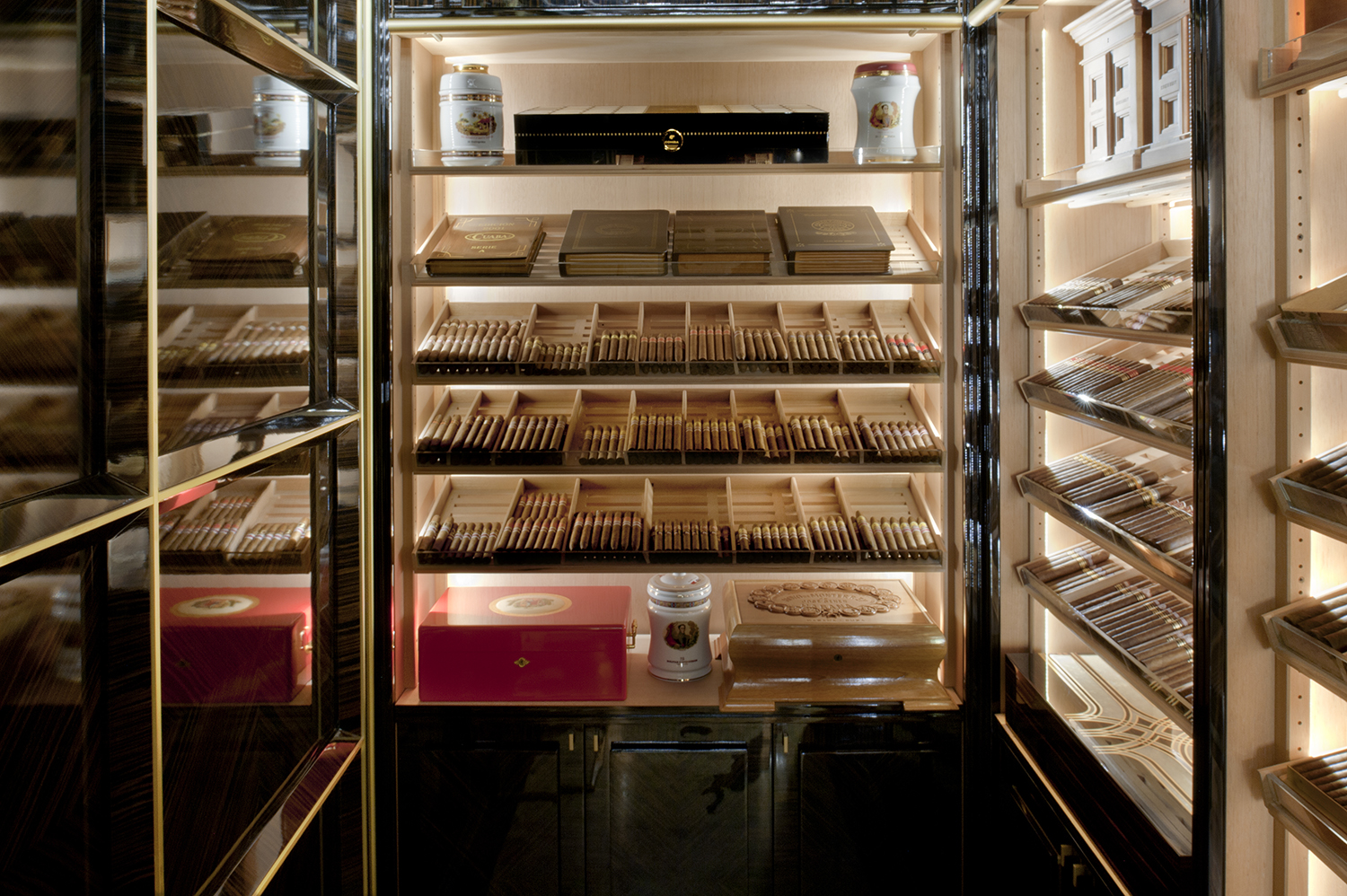The Wellesley Knightsbridge in London appears as any other boutique hotel in any other financial epicenter in the world. Bellmen in funny uniforms open doors, a comically small number of rooms (36, in this case) creates an intimate feel, and a vague but historically important-sounding decorating style like Art Deco elevates the experience after stepping inside (think: right angles and The Great Gatsby). It has a restaurant and a bar and a jazz lounge. In short, it sounds nice and unsurprising, a great business spot where you don’t plan on spending much time. But hidden within its unassuming exterior is a continent-leading cigar collection and Europe’s largest cigar humidor.
Related Guides
Valued at 1.5 million British pounds (approximately $2.1 million), the Wellesley Knightsbridge’s cigar stock is expansive in both number and quality. Even if you’re not especially fond of cigars, walking its rows is a wonder, the equivalent to driving past acres of rickhouses in bourbon country Kentucky, or exploring the underground wine caves in Napa. But if you’re passionate about cigars, the Wellesley Knightsbridge is a playground. Nurtured under the caring hand of Giuseppe Ruo, each stick is carefully selected and stored between 60% and 70% humidity to maintain and develop its individual characteristics for the perfect moment.
While everyone knows the stereotypical wine snob, Ruo is anything but with his enthusiasm for cigars, takings a hospitality-forward philosophy. Hotel guests are offered a crash course in fine tobacco, from selecting a shape, size, and price as well as how to evaluate quality and flavor well before the flame touches the tip. Once you’ve made your selection, you’re whisked into the indoor tasting room or one of two outdoor smoking terraces, where you’ll complete your instruction in the art of lighting and puffing through your first or 500th stick.
Italian by birth, Ruo came to cigars late in life, which may explain his near fanaticism. Referred to as a kind of sommelier within the industry, under his guidance the hotel is a library of Alexandria, educating those from near and far on the basics and finer points alike. Are Cubans worth the hype? Yes. Should you ash? No. He’s available onsite to offer recommendations for pairing your cigar with one of the hotel’s numerous vintage cognacs or a house cocktail. A “masterclass” package is also available, where he provides even further in-depth and one-on-one instruction.
Like any other specialty destination, you’ll find cigars in the Wellesley Knightsbridge that you won’t find anywhere else. Through Ruo, it has many limited editions, including some of the most rare in the world, making it a must-stop for that dream stick. You’ll also discover one of the most smoke-friendly facilities anywhere: strong filtration hums faintly as you sink into leather chairs curved around a crackling fire, and in its outdoor terraces, custom sculptural glass screens shield you from prying eyes as the city passes beyond and a fresh breeze rips your smoke rings apart. It’s an ambiance normally reserved for heads of state and initiates of secret societies.
While even Ruo would not argue against a pilgrimage to Cuba or the growing fields of Central America, his hotel should be considered an island within Europe. Upon its shores, some of the world’s best tobacco arrives, and he curates and teaches from its beachhead. After a few days, you’ll leave more knowledgeable and ready to explore cigars in the farthest corners of the world.








